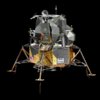Ok, so I did some math. I used a 1065 NM trip on Foreflight I have planned for April and used the built in profiles for the planes I am considering. This is to define fuel efficiency. I know fuel isn't the only cost, but arguably the largest variable operating cost.
Important assumptions: I used the full power profile for each plane. I set the altitude at 9,000 for each plane. I know this isn't ideal for all the models, but I'm assuming I have my dog with me and we're not on oxygen. The Foreflight profiles are based on book values, and we know those were pretty generous in the old days.
I used the flight time and fuel used to create a gallons per minute number. Turns out this number holds true even in changing winds. Then I used this gal/min to calculate how much money I would spend to get to 500 hours (assuming $5/gal).
So the difference from fastest to slowest aircraft was 2 hours for this trip. The difference in cost to 500 hours from cheapest to most expensive was $6,000.
Surprisingly, the first Piper Arrow was the cheapest (generous book values I think, seems unrealistic so I didn't include it). The faster planes, Mooney and Bonanza v-tail were most expensive. But surprisingly the Arrow II and 182 took the same amount of time to get there, but with the 182 using the most gas of all! The Arrow and Mooney used the same number of gallons for this trip, but the Arrow took 2 hours longer.
The 182 can carry a bit more, has two doors, and is better suited to grass strips but at a high fuel cost. Fairly foolproof and does everything. Second most expensive (Socata TB20 was first).
The Mooney is appealing as a cross country plane, but almost defeats my original goal of time building. I could fly slower, but who does that in a Mooney? Also, complaints of cabin comfort and stiff ground handling.
The Piper Arrow is a trainer. But having my own trainer that is on my schedule isn't so bad. I could move up later with lots of complex time. I do like the lower baggage door vs the Mooney so the dog doesn't climb on the wing. He could hop in like he does in the truck.
Bonanza V-tail was as fast as the Mooney but with higher fuel cost. Also it seems they are tricky to load with aft CG concerns.
In summary, I don't know if this makes it easier to decide or just muddles the process more. I think a compromise between time built and cross country capability is the answer for me, but I fully realize now there is no such thing as a perfect plane.

